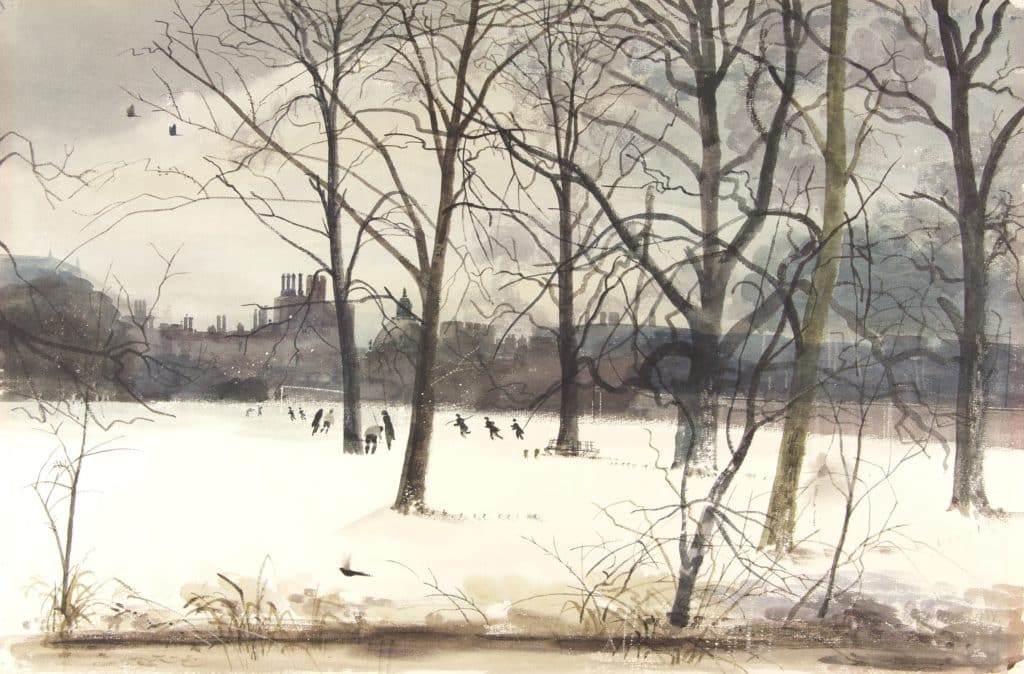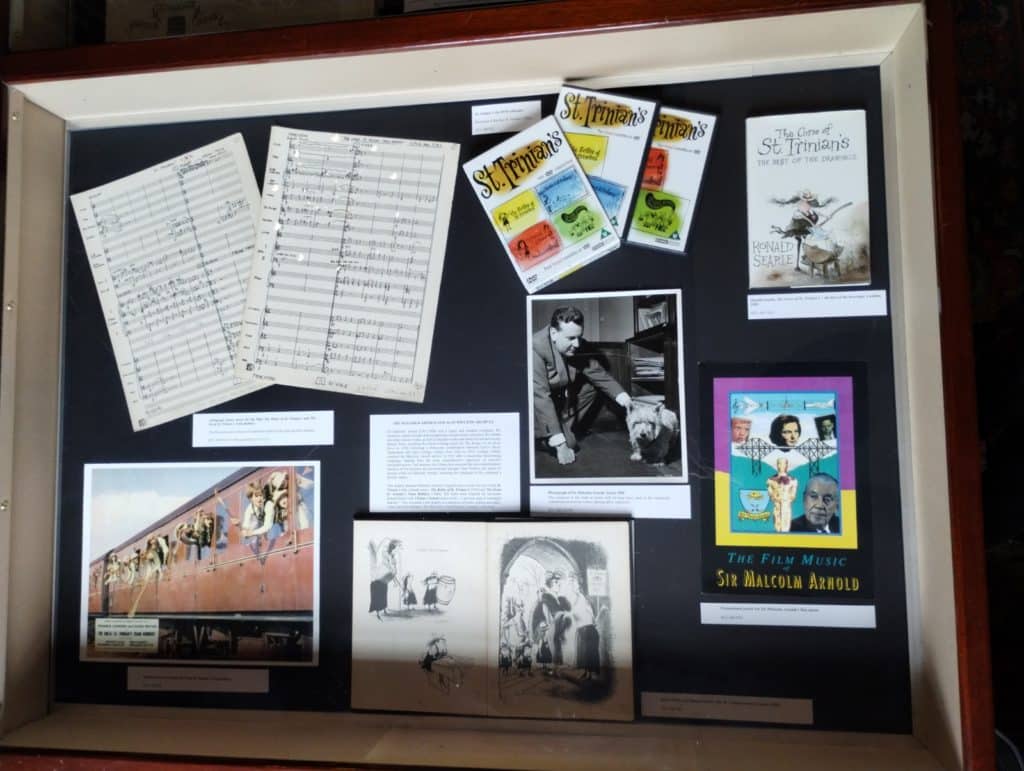Supernatural beings and events are often associated with the medieval period: from The Lord of the Rings to A Game of Thrones, portrayals of witches, mages, dragons and orcs have inhabited worlds inspired by the fashion and customs of the Middle Ages. It is perhaps unsurprising to find some of these creatures in medieval books too; however, they are often much less threatening than humorous to the modern reader, as they combine zoomorphic with humanoid features that rarely have any relation to the text. They can appear in the margin of the page or hide within decorated initials, page frames, borders, and elsewhere. Here are some examples from College Library:
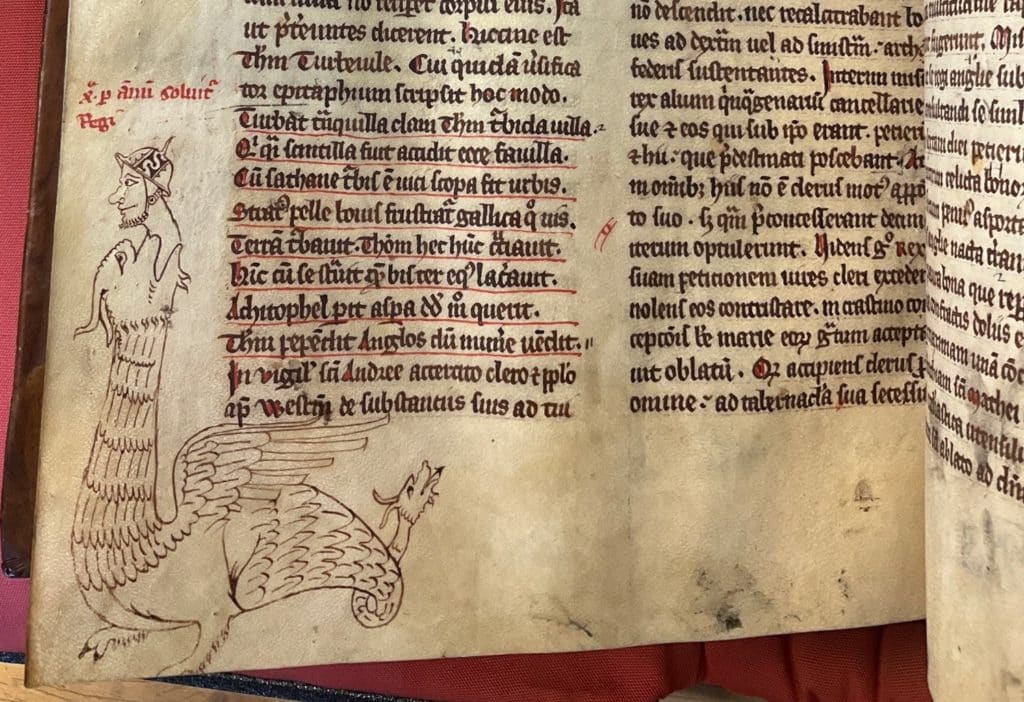
A copy of the Flores historiarum [‘The flower of histories’] from the Augustinian Priory of Merton (Surrey), dating to 1290-1310 (ECL MS 123, f.248v).
This is a historical chronicle describing events from Creation to the year 1306. The manuscript as a whole does not include any noteworthy decoration, but just before the end we are presented with a dragon (or griffin?) swallowing an unbothered soldier and his helmet.
A copy of a commentary on the Book of Job authored by Pope Gregory I, dating to 1200-1225 (ECL MS 12, f.46r).
Here we see another winged, dragon-like creature. Unfortunately, the attempt of a second scribe to imitate this drawing ended up with something that looks more like a dog-headed chicken.
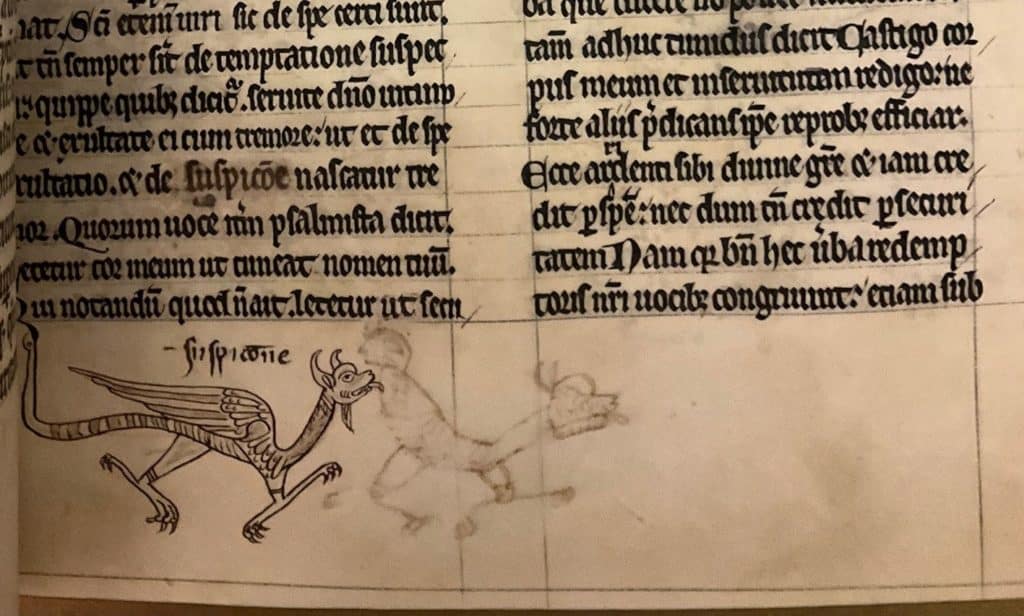
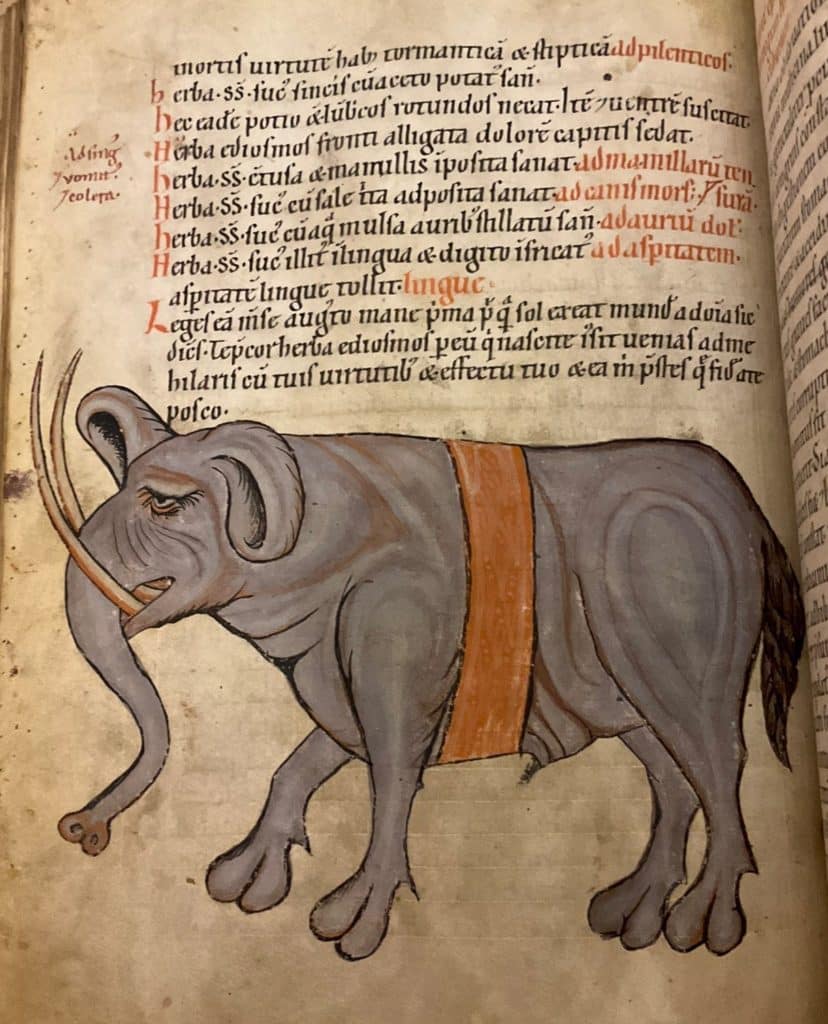
A herbal from Germany, dating to 1125-1175 (ECL MS 204, f.158v)
This is a richly illustrated compilation of different texts related to medicine, including a treatise on herbs and another one about the virtues of different animals. The elephant you see here appears below a section on the uses on mint, including killing roundworms and alleviating stomach- and headaches. Few Europeans had ever seen an elephant in real life, meaning that depictions of this animal resembled a compilation of body parts of other mammals (here the horse-tail, the hooves/paws, and boar tusks).
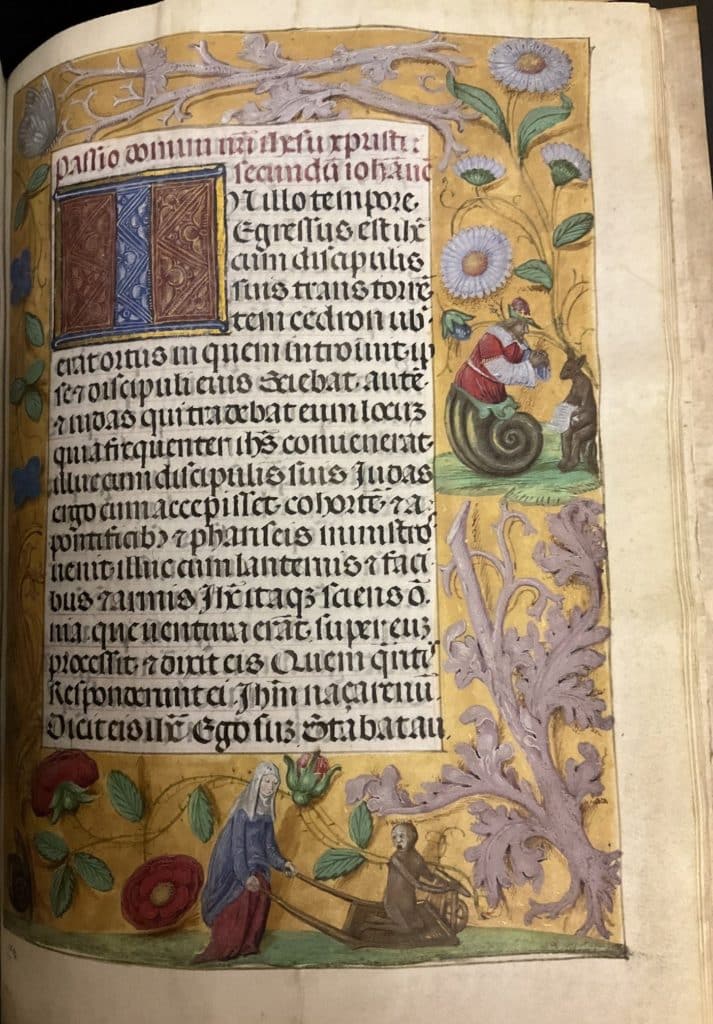
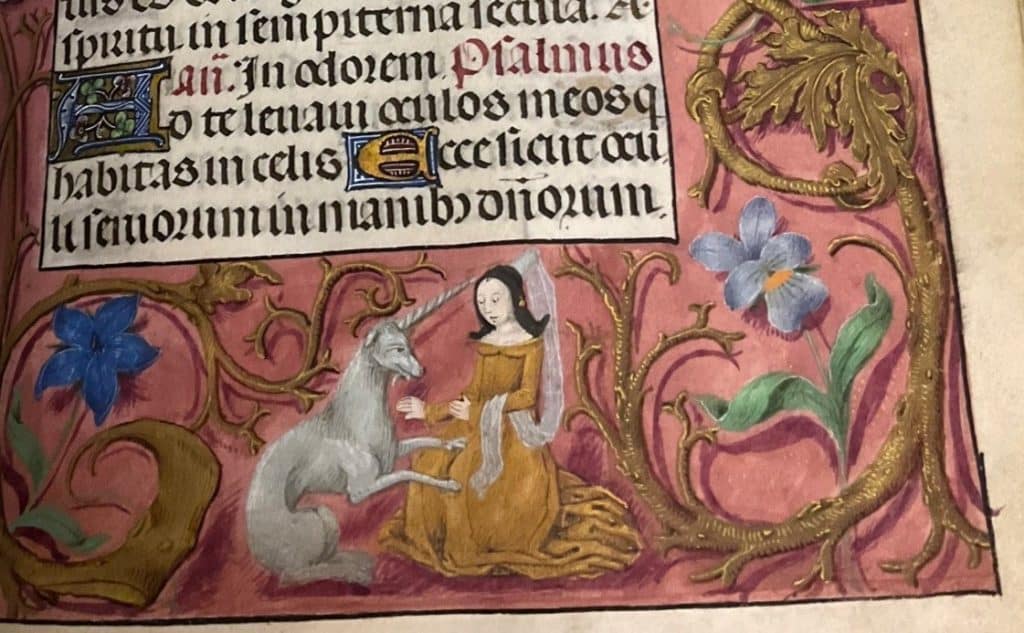

Books of Hours, a very popular kind of devotional book in the late Middle Ages, are full of such hybrids. These volumes were meant for personal use, as they were used to pray during the canonical hours. Despite the very serious premise of the book’s purpose, one of the copies housed at Eton displays unicorns, snail-men, wannabe-kangaroos, monkeys and all sorts of creatures that are difficult to classify.
Charlie Barranu, Library Curator of Rare Books and Manuscripts


